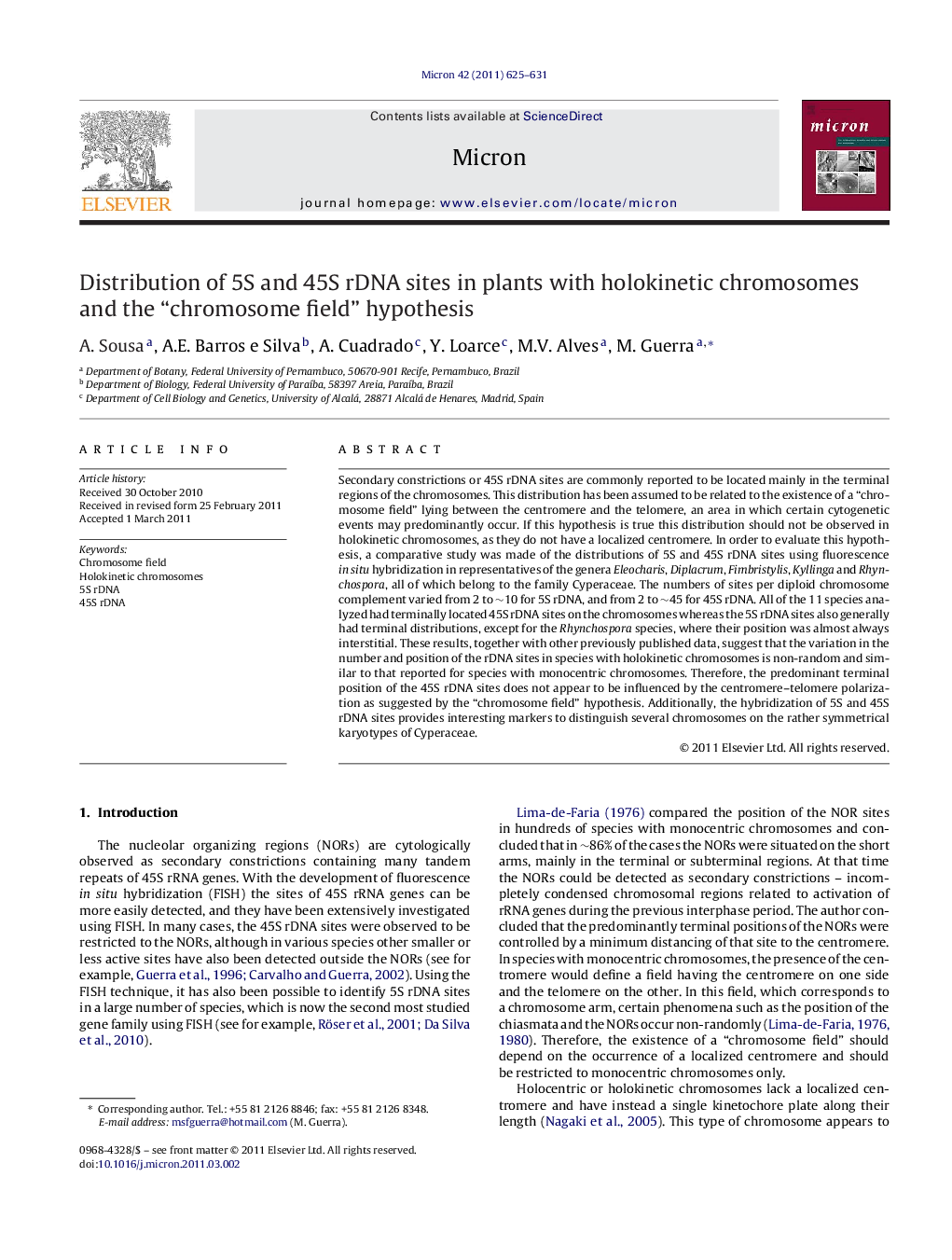| Article ID | Journal | Published Year | Pages | File Type |
|---|---|---|---|---|
| 1589138 | Micron | 2011 | 7 Pages |
Secondary constrictions or 45S rDNA sites are commonly reported to be located mainly in the terminal regions of the chromosomes. This distribution has been assumed to be related to the existence of a “chromosome field” lying between the centromere and the telomere, an area in which certain cytogenetic events may predominantly occur. If this hypothesis is true this distribution should not be observed in holokinetic chromosomes, as they do not have a localized centromere. In order to evaluate this hypothesis, a comparative study was made of the distributions of 5S and 45S rDNA sites using fluorescence in situ hybridization in representatives of the genera Eleocharis, Diplacrum, Fimbristylis, Kyllinga and Rhynchospora, all of which belong to the family Cyperaceae. The numbers of sites per diploid chromosome complement varied from 2 to ∼10 for 5S rDNA, and from 2 to ∼45 for 45S rDNA. All of the 11 species analyzed had terminally located 45S rDNA sites on the chromosomes whereas the 5S rDNA sites also generally had terminal distributions, except for the Rhynchospora species, where their position was almost always interstitial. These results, together with other previously published data, suggest that the variation in the number and position of the rDNA sites in species with holokinetic chromosomes is non-random and similar to that reported for species with monocentric chromosomes. Therefore, the predominant terminal position of the 45S rDNA sites does not appear to be influenced by the centromere–telomere polarization as suggested by the “chromosome field” hypothesis. Additionally, the hybridization of 5S and 45S rDNA sites provides interesting markers to distinguish several chromosomes on the rather symmetrical karyotypes of Cyperaceae.
